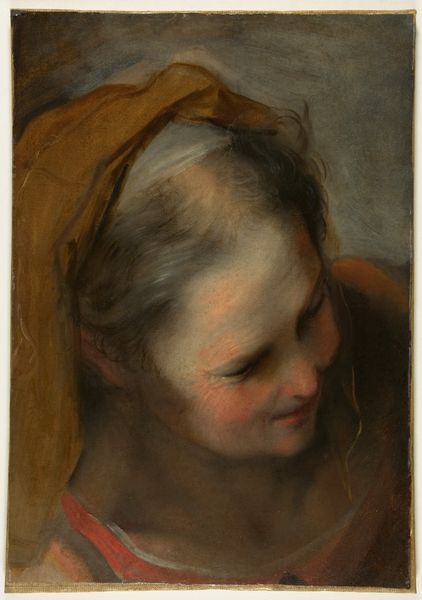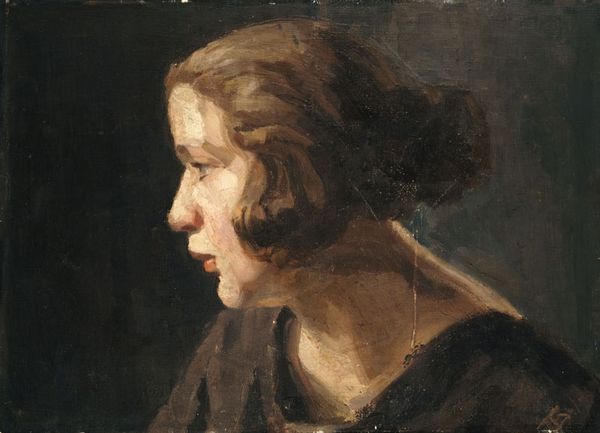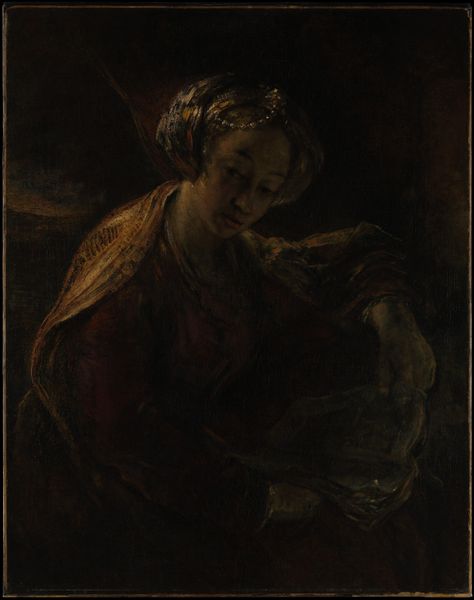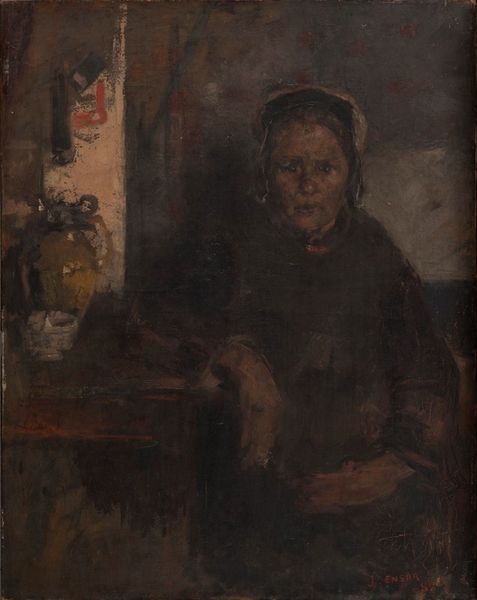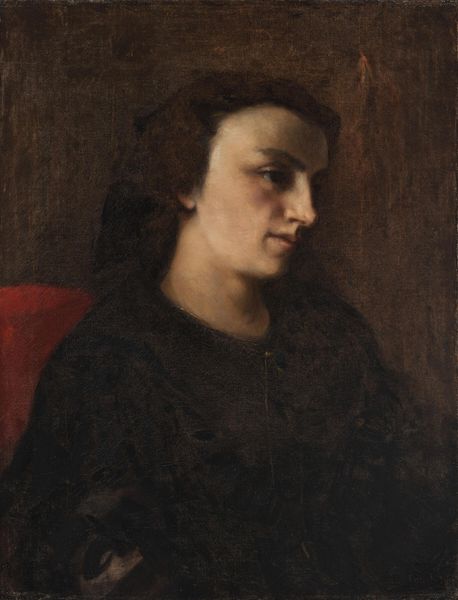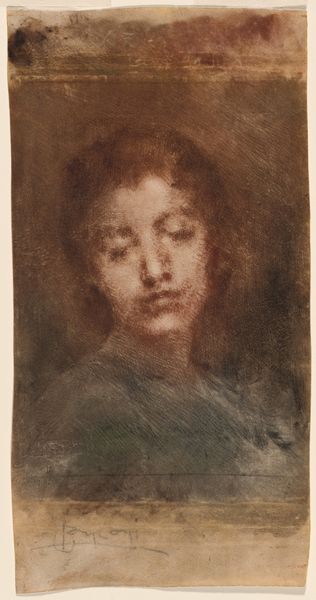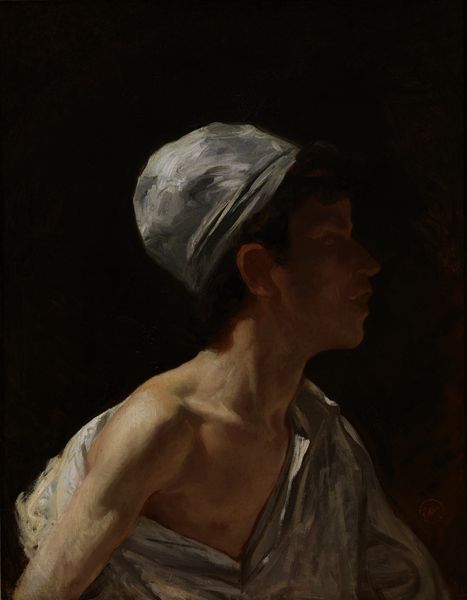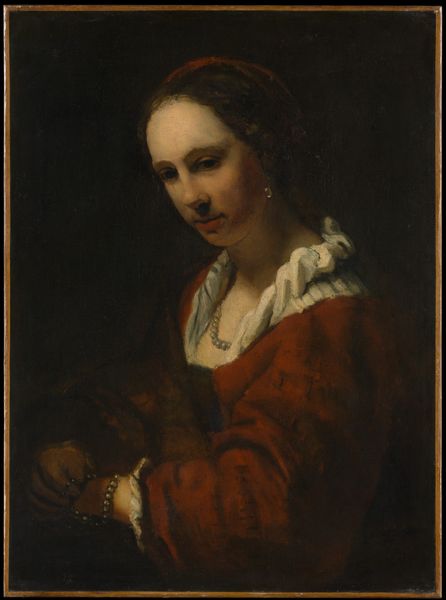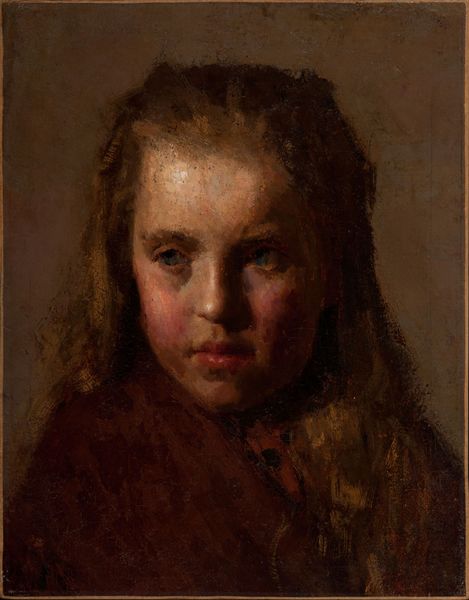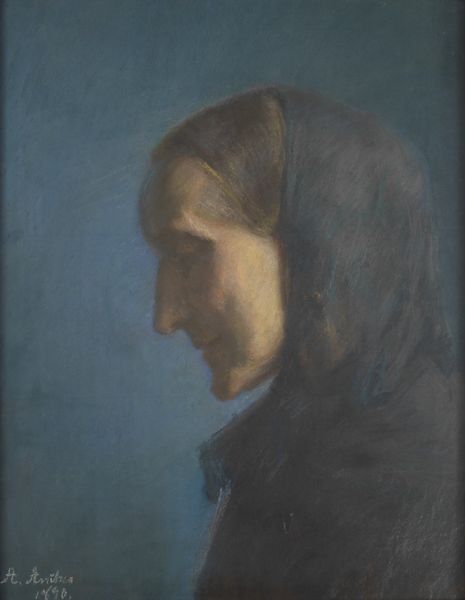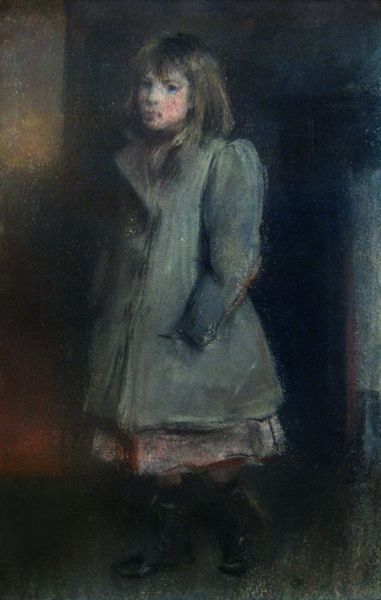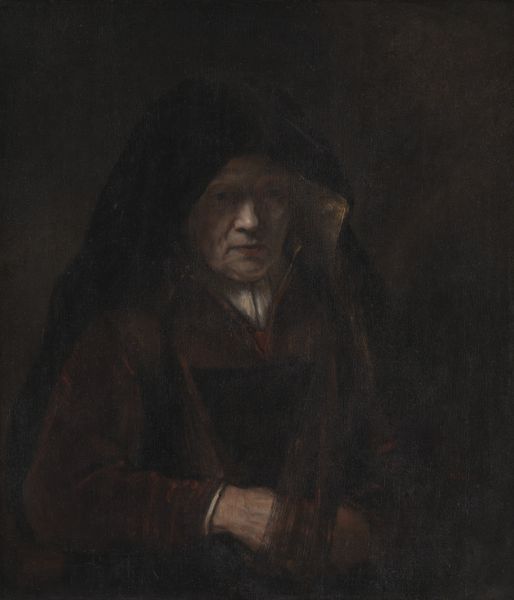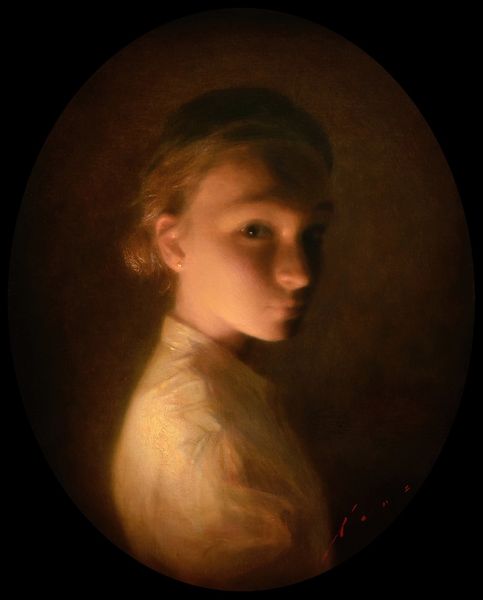
Portrait of a Young Woman (_Hendrickje Stoffels_) c. 1660s - 1670s
0:00
0:00
painting, oil-paint, oil, wood
#
portrait
#
baroque
#
dutch-golden-age
#
painting
#
oil-paint
#
oil
#
wood
#
14_17th-century
#
human body photography
Dimensions: 74.2 x 51.2 x min. 0.8 cm
Copyright: Public Domain
Editor: So, this is Rembrandt's "Portrait of a Young Woman," thought to be Hendrickje Stoffels, painted sometime in the 1660s or 70s. It’s an oil painting on wood. I find her gaze so direct and…unflinching, almost modern in its realism. What do you see in this piece, especially knowing its context? Art Historian: That gaze is key. Rembrandt often used light to explore interiority, and in this portrait, it spotlights Hendrickje in a way that feels both intimate and defiant, wouldn’t you agree? Remember, during the Dutch Golden Age, societal roles for women were strictly defined. The wealthy class became dominant. So, I wonder about her expression: does it hint at her understanding of these constraints? Was this portrait, then, an attempt to assert her individuality and presence? Editor: That's fascinating! I hadn't considered it as an act of defiance. I was just struck by the apparent lack of idealization; she feels so…real. Art Historian: Exactly! And Rembrandt, throughout his career, seemed invested in representing individuals as they truly were, moving beyond the era's conventional glorification of wealth and status. The very brushstrokes are a part of that expression. What do you see in them? How would you describe the style? Editor: They're quite loose, right? And the dark background throws the focus onto her face and hands, and... her body is sort of obscured, almost. Maybe he wanted us to concentrate on her intellect? Art Historian: Perhaps. Or it could be highlighting the areas of her body she used for creativity or physical, manual labour: not labour from some servitude, but as a marker of independent character, where all areas in the light are essential to what makes this particular human. Editor: That gives me a lot to consider, thank you. It's like looking at it through a completely different lens – considering not just *what* is painted but *why* and *who* is it painted *for*. Art Historian: Precisely. And who the woman really was and what she represents matters so we appreciate better what such image aimed to offer. It helps us to expand how we approach to art.
Comments
No comments
Be the first to comment and join the conversation on the ultimate creative platform.
